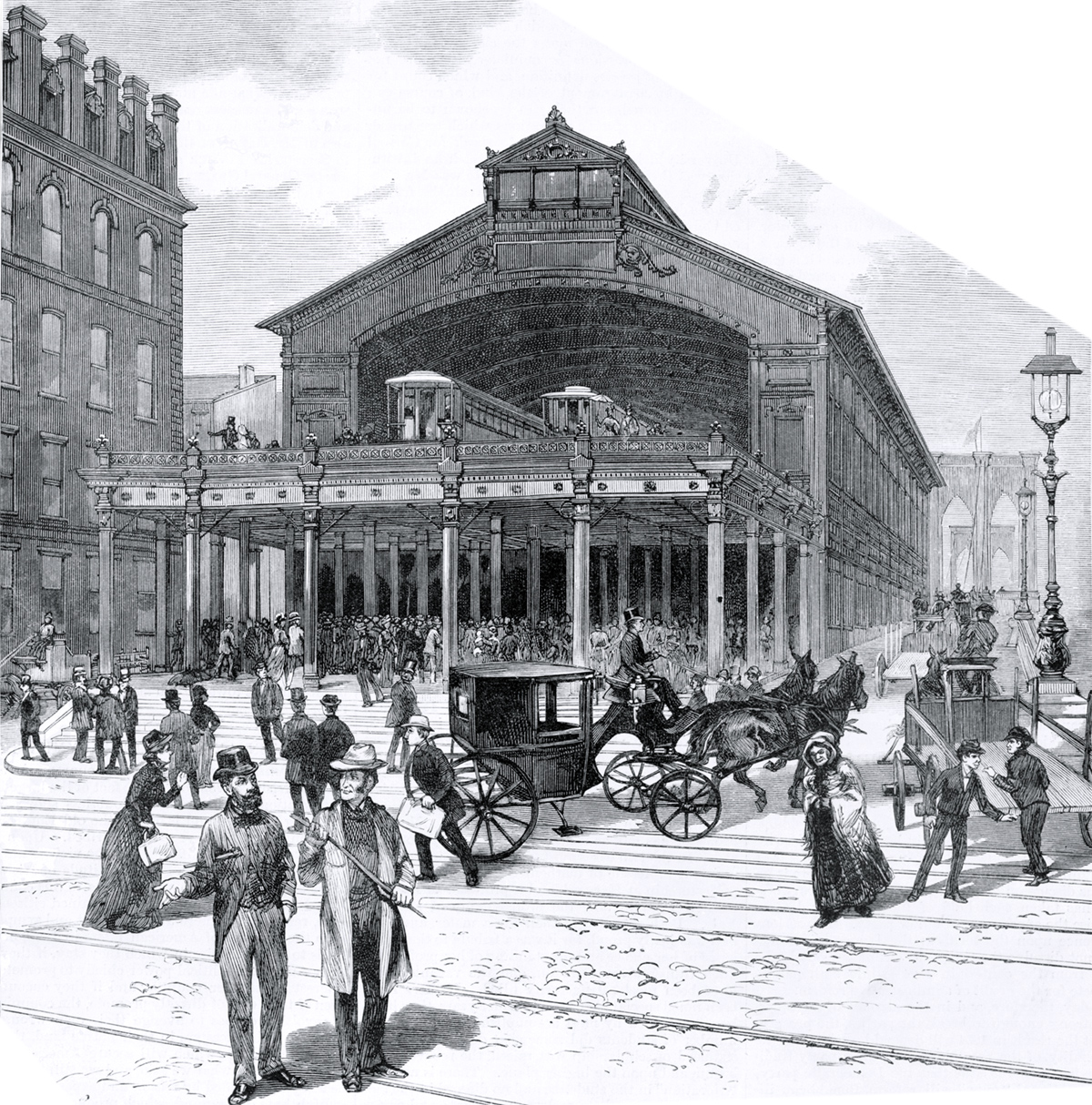
New York Entrance to Brooklyn Bridge - 1883
The original Brooklyn Bridge Terminal, at Park Row. Illustration published in the front page of Harper's Weekly, May 26, 1883. Original title: The New York and Brooklyn Suspension-Bridge — New York Entrance. — from Photograph by Gubelman. Continue below...

The Brooklyn Bridge, over the East River, opened to traffic on May 24, 1883. It was designed by German-born engineer John Augustus Roebling (1806-1869). Here some text from the magazine that accompanies this engraving:
«The total length of the bridge is 5989 feet, of which the central span between the towers is 1595 feet 6 inches, the “land spans” from the towers to the anchorages each 930 feet, the approach on the New York side 1562 feet 6 inches, and on the steeper Brooklyn side 971 feet. These dimensions do not make this the longest bridge in the world. But there is no single span which approaches the central span over the East River. It is half as long again as Roebling’s Cincinnati bridge (1057 feet between towers), and nearly twice as long as the same engineer’s Niagara bridge (821 feet). The span of the ill-fated bridge over the Ohio at Wheeling, which was built in 1848 and blown down in 1854, was 1010 feet. Noteworthy suspension-bridges in Europe are Telford’s over the Menai Straits (589 feet), finished in 1825; Chaley’s bridge at Fribourg (870 feet), finished in 1834 ; and Tierney Clark’s bridge over the Danube at Pesth (670 feet), finished in 1849. The longest spans bridged otherwise than by a roadway hung from cables are the central spans of Stephenson’s Britannia (box girder) Bridge (459 feet), and of Eads’s St. Louis bridge of steel arches (520 feet). The largest span of an arch of masonry known to have been built in a bridge. (251 feet) was in that built in the fourteenth century, and destroyed by Carmagnola in the fifteenth, which crossed the Adda at Trezzo. The largest now standing is that of the Grosvenor Bridge at Chester (200 feet), and the next the central arch of London Bridge (152 feet).
The Brooklyn Bridge is thus one of the mechanical wonders of the world, one of the greatest and most characteristic of the monuments of the nineteenth century. Its towers, at least, bid fair to outlast every structure of which they command a view. When our New-Zealander takes his stand above the saddles which are now ridden by the cables of the bridge, to look over the site of a forsaken city, there will be no ruins of churches—at least of churches now in being—for him to sketch or see. The web of woven steel which now hangs between the stark masses of the towers may have disappeared, its slender filaments rusted into nothingness under the slow corrosion of the centuries. Its builders and the generation for which they wrought may have been as long forgotten as are now the builders of the Pyramids, whereof the traveller, “as he paceth amazedly those deserts,” asks the Historic Muse “who builded them; and she mumbleth something, but what it is he heareth not.” It is not unimaginable that our future archæologist, looking from one of these towers upon the solitude of a mastless river and a dispeopled land, may have no other means of reconstructing our civilization than that which is furnished him by the tower on which he stands. What will his judgment of us be?
New York Entrance to Brooklyn Bridge - 1883

|
Copyright © Geographic Guide - Antique photographs of NYC. |